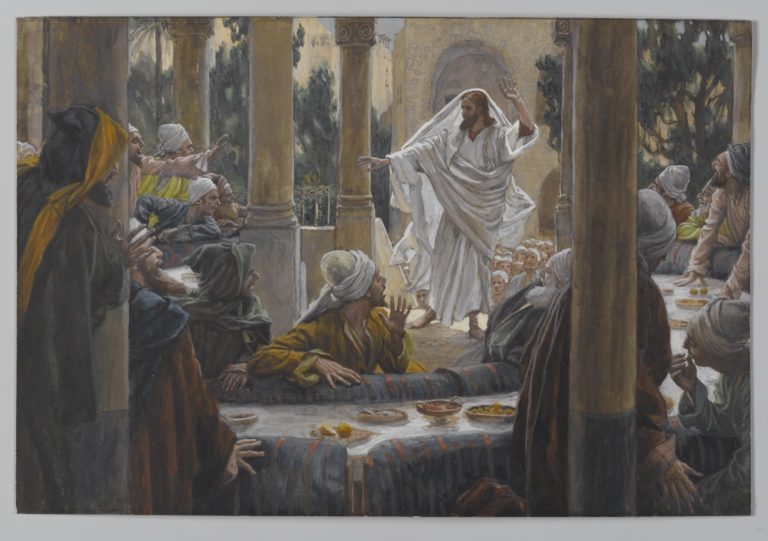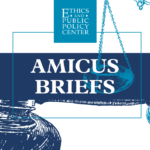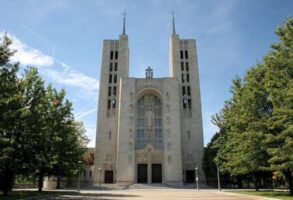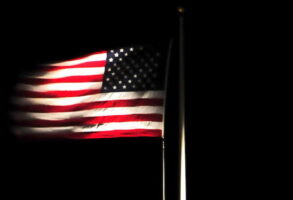
Published July 29, 2021
On Monday of last week, the General Secretary of the USCCB, Msgr. Jeffrey Burrill, resigned ahead of reports that he had been a serial user of a gay hook-up app called Grindr.
The reporting that precipitated the resignation came from The Pillar, an upstart Catholic media outlet run by JD Flynn and Ed Condon. (Disclosure: Both are friends, and I recently wrote a brief piece of analysis for The Pillar.) Almost immediately, interest in the story spread beyond the Catholic press and the usual religion reporters. The story had more legs than an octopus.
There was the obvious problem of a priest in a significant position living a double life in violation of his vows. Moreover, while there is no indication whatsoever that Burrill’s misconduct involved minors, the Grindr app is notorious for putting minors at risk of exploitation precisely because the app allows users to remain anonymous.
Significantly, because The Pillar used legal, commercially available cell-phone tracking data – but has revealed neither the source of that data nor how they came to acquire it – the story set off controversies about data security and about the journalistic ethics of using such data in reporting.
Since last Monday’s report, The Pillar has released two further reports based on similar tracking data: One indicating the use of dating and hook-up apps at multiple parish rectories in the Archdiocese of Newark, and the other reporting on the security threat posed to the Holy See by the use of such hook-up apps in the Vatican.
In sum, The Pillar’s reporting has ticked off a lot of people: from the Secretariat of State in the Vatican, to the USCCB, to data-security gurus, would-be gatekeepers of the journalistic guild, to the usual voices on Catholic social media who cry “homophobia” every time it is suggested that an unnatural vice among clerics might be a problem worth addressing.
Not everyone is ticked at The Pillar, of course. Most “ordinary” Catholics I’ve talked to think The Pillar has done the Church a service. And that points to something else going on that deserves attention.
Consider the following timeline of events, as reported by The Pillar, which gives some sense of how Church officials have responded to all this.
• Sometime during the week of July 11-17: “The Pillar approached USCCB officials . . . offering to present findings regarding personnel misconduct to USCCB leadership during an off-the-record meeting before publication, and then allowing the conference time to formulate its internal response.” The meeting was scheduled for July 19.
• July 17: “The Pillar met for more than 90 minutes with both Cardinal Pietro Parolin, Vatican Secretary of State, along with Dr. Paolo Ruffini, prefect of the Vatican’s dicastery for communications, to present its findings. . . .After the meeting’s conclusion, Ruffini requested questions from The Pillar, which he said he would submit to Parolin for a response, and asked for a week for the formulation of a response, to which The Pillar agreed.”
• July 18: “The Pillar was informed that a meeting with senior USCCB officials scheduled for Monday, July 19, had been cancelled. The Pillar was asked to submit written questions instead.” The Pillar submitted written questions, and at the request of the USCCB, agreed to extend the deadline until Tuesday, July 20.
• July 19: Catholic News Agency (former employer of Flynn and Condon) “reported the possibility of forthcoming media reports on the issue of app signal data.”
• July 20: USCCB officials offer an in-person meeting with The Pillar: “En route to that meeting, The Pillar learned from media reports that USCCB General Secretary Msgr. Jeffrey Burrill had resigned in response to ‘impending media reports alleging possible improper behavior.’”
Here’s what this adds up to: The Pillar analysis of mobile app data revealed some very unpleasant things. Rather than simply publishing the findings, The Pillar notified the relevant Church authorities and gave them a reasonable chance to formulate a constructive response, granting additional time when requested.
Either the USCCB or the Secretariat of State (or both) clearly didn’t like what The Pillar had to tell them. The response was to stall, leak parts of the story to other sympathetic news outlets, and then stonewall. I’ll leave it to communications directors and journalists to argue over whether this maneuvering was brilliant or slimy.
What is clear is that this maneuver was meant to be punitive, to intimidate. This strategy was not to stop the story coming out – word of the story was clearly leaked to other outlets, and Burrill resigned before The Pillar ever reported a word – but to inflict maximum damage on two Catholic reporters who had the impudence to inform Church leaders of something they didn’t want to hear.
There are, to be sure, legitimate questions to be asked about The Pillar’s use of app data in their reporting. But when Church leaders reflexively treat ecclesially minded journalists like Flynn and Condon – journalists who are emphatically not “fringe” – as pariahs, simply for having brought inconvenient truths about clerical sins to the attention of Church leaders, there are serious unintended consequences.
As the Catholic media landscape changes rapidly, bishops – and their often-lay-led communications teams – are going to have to make some strategic choices. Do they want a “kept” Catholic media? A Catholic media trusted by no one, where the hardest news about the Church is left to be reported by secular news outlets (or attorneys general) with no love for, and limited understanding of, the Church?
And then there is the specter of an ever-more-poisonous Catholic media fringe, which grows in inverse proportion to the bishops’ own transparency and credibility, especially on questions of sexual malfeasance and abuse by clergy. Bishops who lament that growing fringe and its influence over their flocks would do well to remember what feeds it.
Restoring episcopal credibility is going to require a level of accountability and transparency which may be painful, even humiliating, at times. And in that regard, independent Catholic journalists like Flynn and Condon are not the Church’s enemy – they’re some of her most important allies.
*Image: Curses Against the Pharisees (Imprécations contre les pharisiens) by James Tissot, c. 1890 [Brooklyn Museum, New York]
© 2021 The Catholic Thing.
Stephen P. White is executive director of The Catholic Project at The Catholic University of America and a fellow in Catholic Studies at the Ethics and Public Policy Center.
Stephen P. White is a fellow in the Catholic Studies Program at the Ethics and Public Policy Center. Mr. White’s work focuses on the application of Catholic social teaching to a broad spectrum of contemporary political and cultural issues. He is the author of Red, White, Blue, and Catholic (Liguori Publications, 2016).











